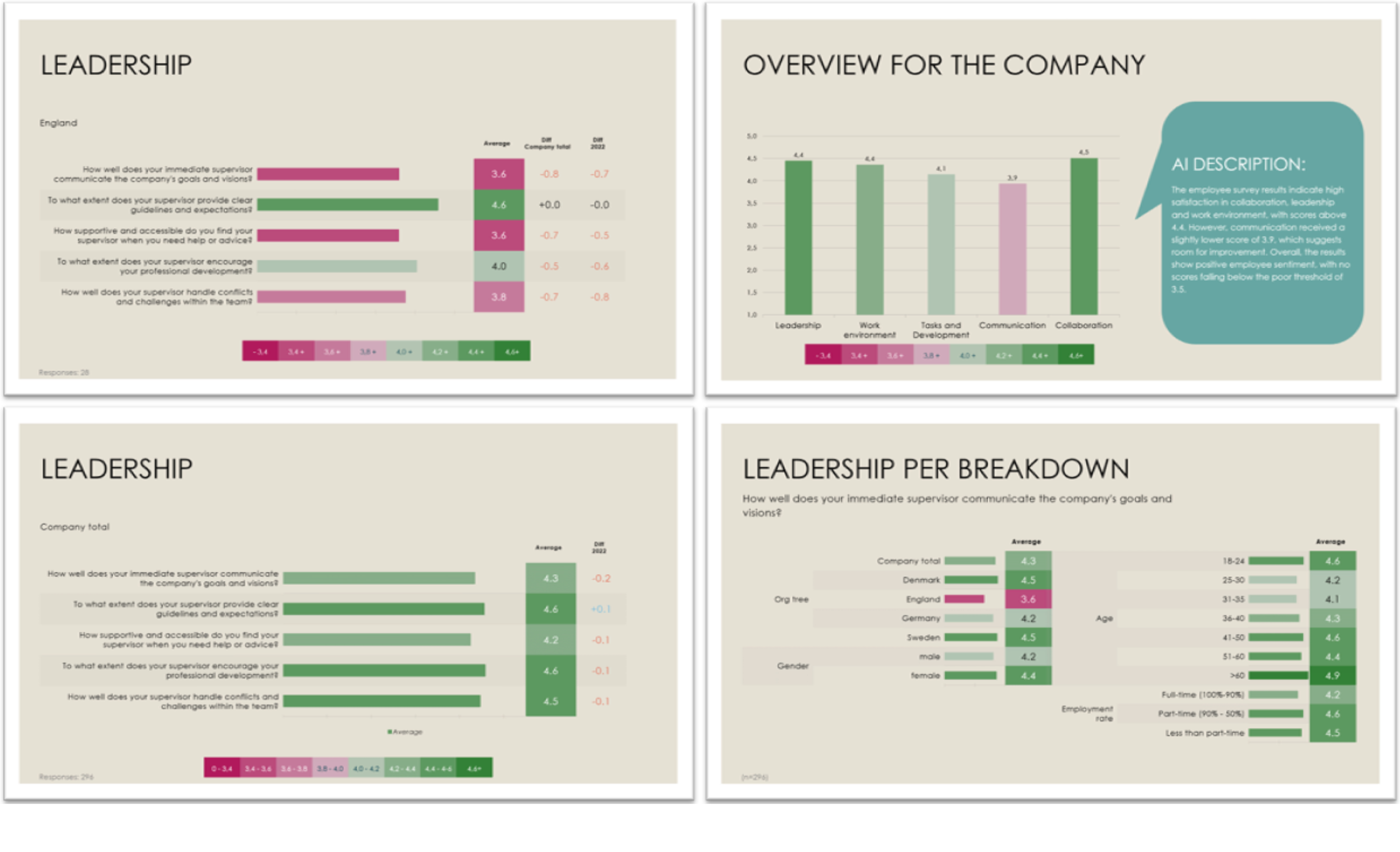An employee report template is a ready-made set of slides that helps HR and managers share survey results in a clear way. Instead of starting from a blank deck, you can use a structure that already includes the right charts and layouts. This saves time, keeps reporting consistent, and makes it easier for people to focus on the results instead of the formatting.
Why Employee Report Templates Matter
Employee surveys give companies insight into engagement, satisfaction, and workplace culture. But the results often live in spreadsheets that are hard to read. When it comes time to share findings with leaders or teams, you need something that communicates quickly and clearly.
A good employee report template helps you:
● Save hours that would otherwise be spent building slides from scratch.
● Keep design consistent across different teams and surveys.
● Highlight key findings with charts instead of long tables.
● Compare results by role, location, or time period.
By using templates, HR can spend less time on formatting and more time interpreting results.
How Employee Report Templates Work
A strong employee report template is built to fit common survey types. Most include:
● Charts for engagement, satisfaction, and driver analysis.
● Layouts for comparing results across departments or demographics.
● Sections for open comments so feedback is not lost.
● Summary slides that highlight the top insights.
With Research Automators, survey results can be exported straight into branded PowerPoint decks or Excel files. That means no copy-pasting and no worrying about broken formatting. The exports are powered by rule-based reporting, so each question type is automatically displayed in the format that works best.
Examples of Employee Report Templates
Here are a few ways teams use employee report templates:
Engagement summary deck
A high-level view of how engaged employees feel overall, often tracked year over year.
Satisfaction vs. retention report
Compares satisfaction scores with turnover data or intent-to-stay questions. Helpful for spotting risk areas.
Pulse survey report
Short reports that are shared more frequently, such as monthly or quarterly check-ins on morale.
Executive dashboard deck
A slim version designed for leadership. It focuses on highlights, risks, and next steps.
Best Practices for Employee Survey Reporting
When you build your next employee report, a few simple habits can make a big difference:
● Use charts over raw numbers to make patterns easier to see.
● Track trends over time so leaders can see if actions are working.
● Provide context instead of just sharing scores. A chart is powerful, but it becomes more useful with commentary.
Stick to a consistent format across surveys. This makes it easier to compare results and build trust in the data.
FAQ
What is an employee report template?
It is a pre-designed slide deck for sharing HR or staff survey results in a structured way.
Why should HR use templates?
Templates save time, reduce formatting work, and make reports easier to compare across surveys.
What types of surveys can fit into templates?
Engagement, satisfaction, onboarding, exit, and pulse surveys can all be reported using templates.
Can the templates be customized?
Yes. They can be branded with your company’s colors, fonts, and logos.
How do Research Automators templates work?
They connect directly to your dashboard and use rule-based reporting to export results into ready-to-share PowerPoint or Excel files.
Bringing Employee Insights to Life
An employee report template makes survey reporting faster and clearer. Instead of losing time in slide design, HR teams can put the focus where it belongs: improving the employee experience.
👉 See real examples — browse our PowerPoint report templates and find a style that fits your HR project.
